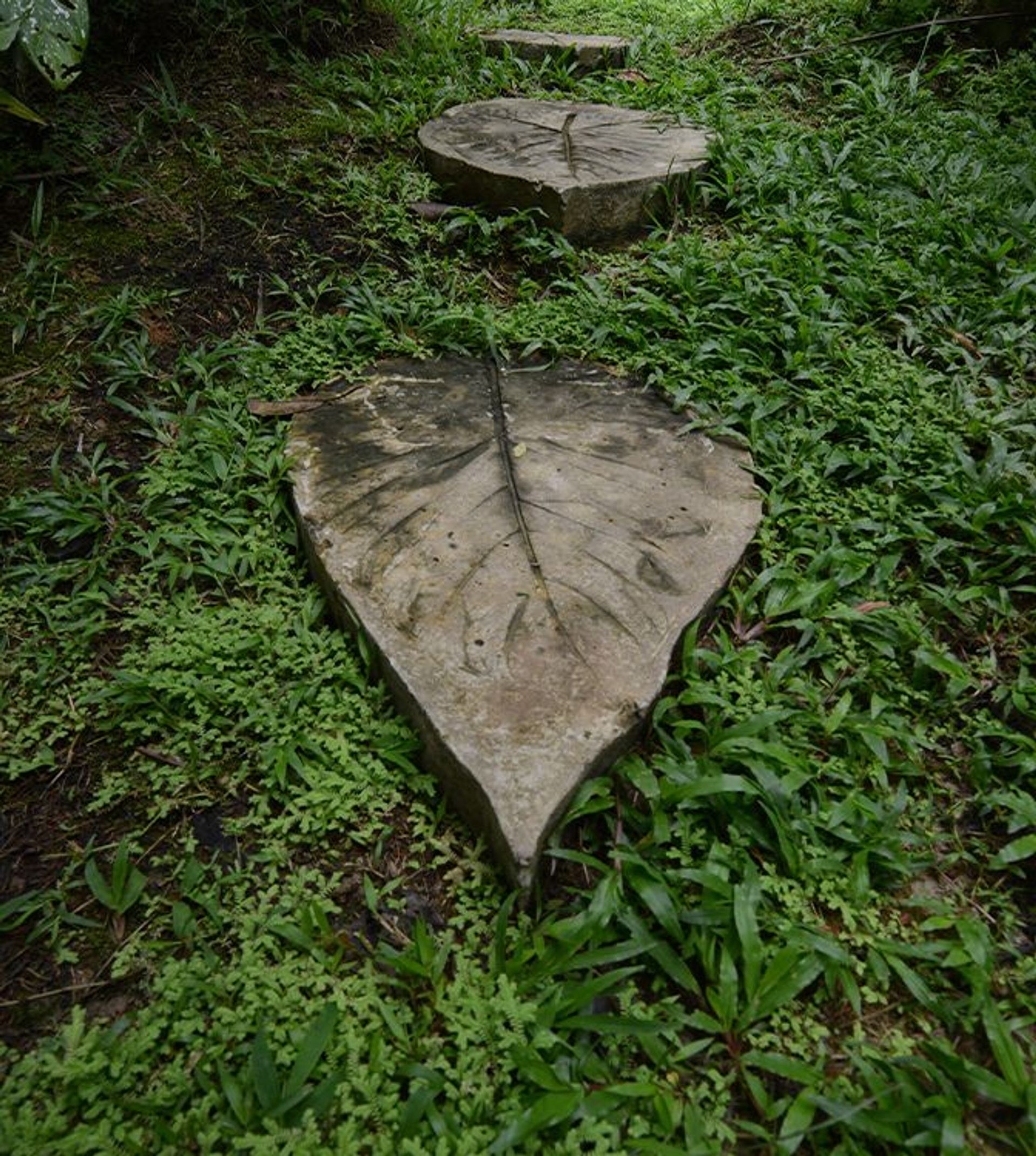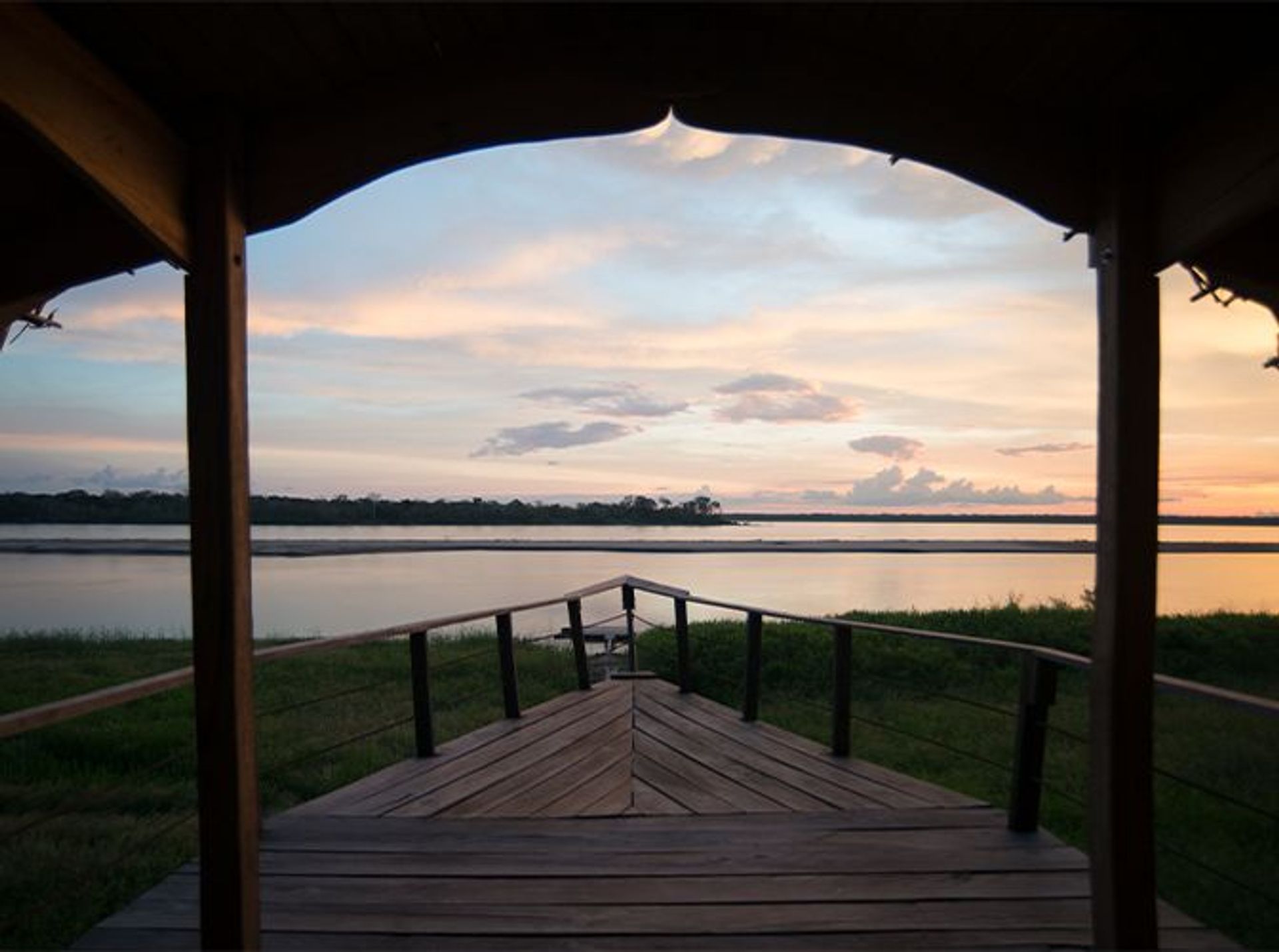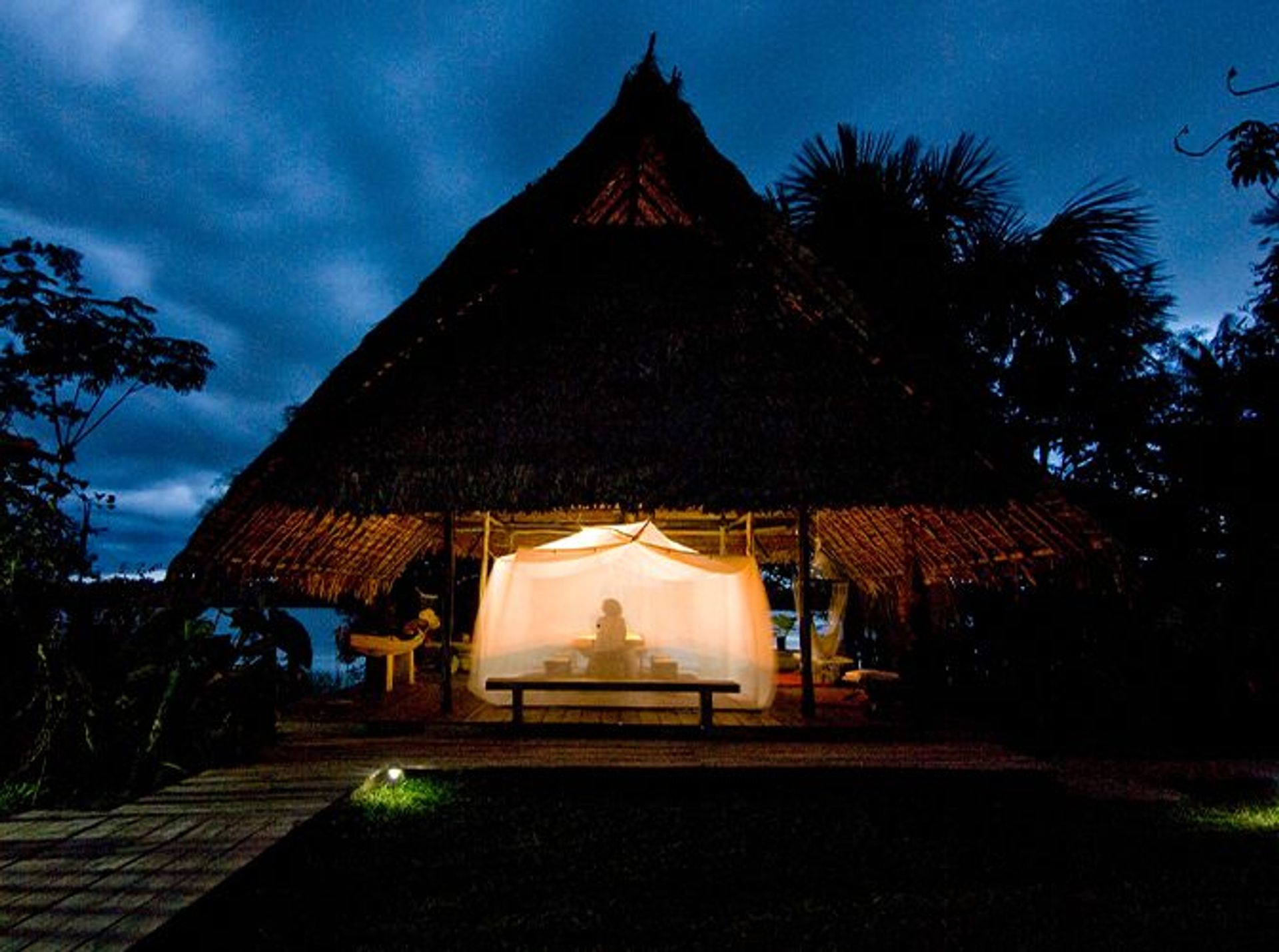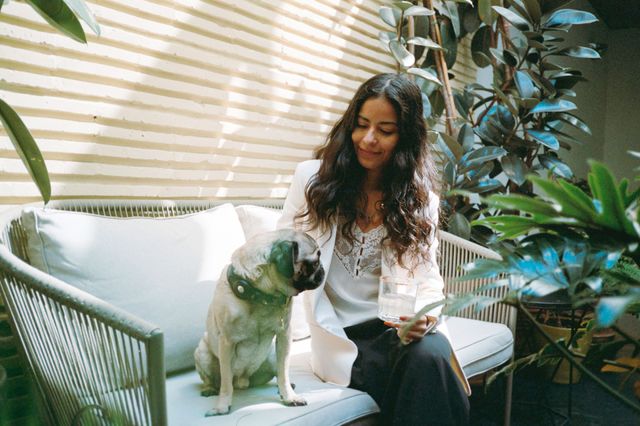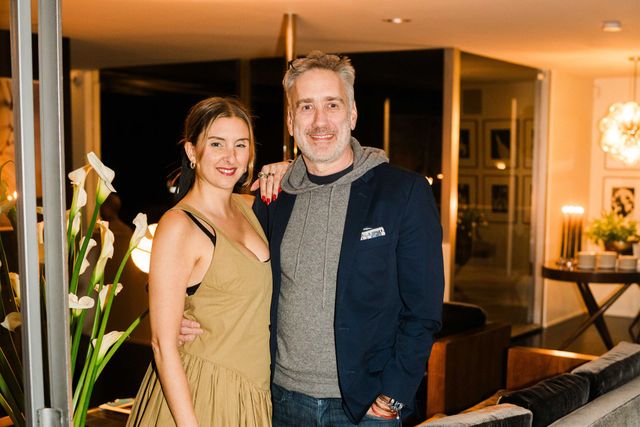Conversation with Diego and Marlene Samper
- Category
- Q&A
- Written by
- Stacy Suaya
- Published
- July 13, 2021
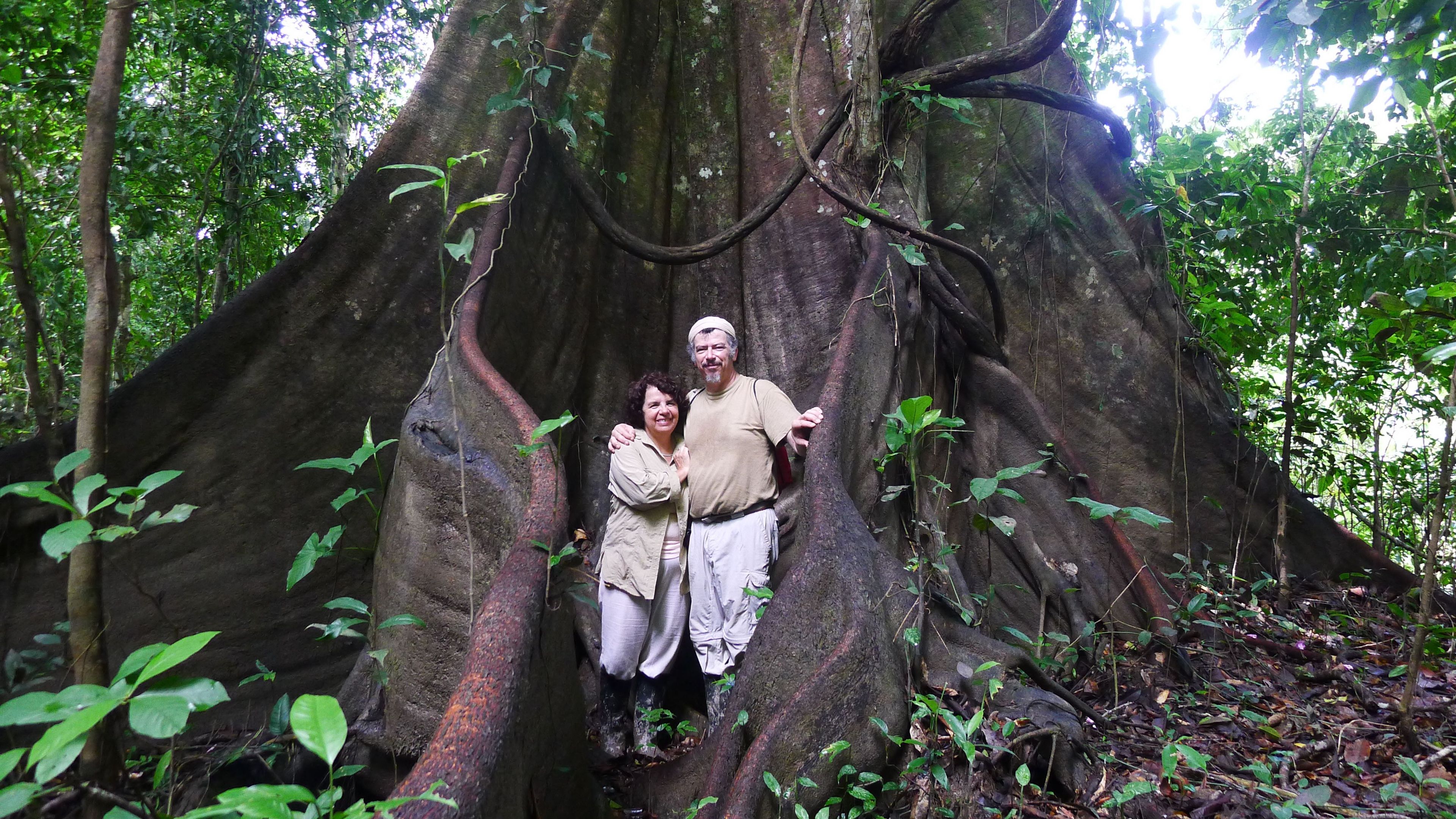
Calanoa is a jewel of a hotel, a true, off-grid experience found deep in the Amazon. The unique compound of cabins was designed by Diego Samper, an artist, who operates the jungle lodge with his wife, Marlene.
The pair met on a science and research expedition in Colombia’s Sierra Nevada de Santa Marta National Park in 1980; they were 22 and 24. They were married in seven months and settled in the Colombian Amazon, where the first Calanoa was built: a house where they lived and worked on their conservation efforts.
In 1988, the Colombian drug wars broke out and the couple (and their two daughters) fled for Bogota. Then in 1999, they moved to Vancouver’s Pacific Rainforest, where they still come for part of the year. Along the way they operated a publishing house, publishing 33 books about the Amazon, other South American ecosystems, architecture and photography in 17 years, while Diego photographed and painted.
Ten years ago, they returned to their magical Amazon and started to build the second Calanoa: an eight cabin hotel that can be reached by boat from the city of Leticia. It also became their living work of art and a place to educate guests on their conservation efforts.
In fact, Diego is currently working on an art project there: three years ago he stapled a translucent fabric to the trees and he is letting the vegetation grow over it. His unattachment to the outcome and love of the journey is what Calanoa is all about: letting the jungle be the boss. We reached out to Diego and Marlene to find out more.
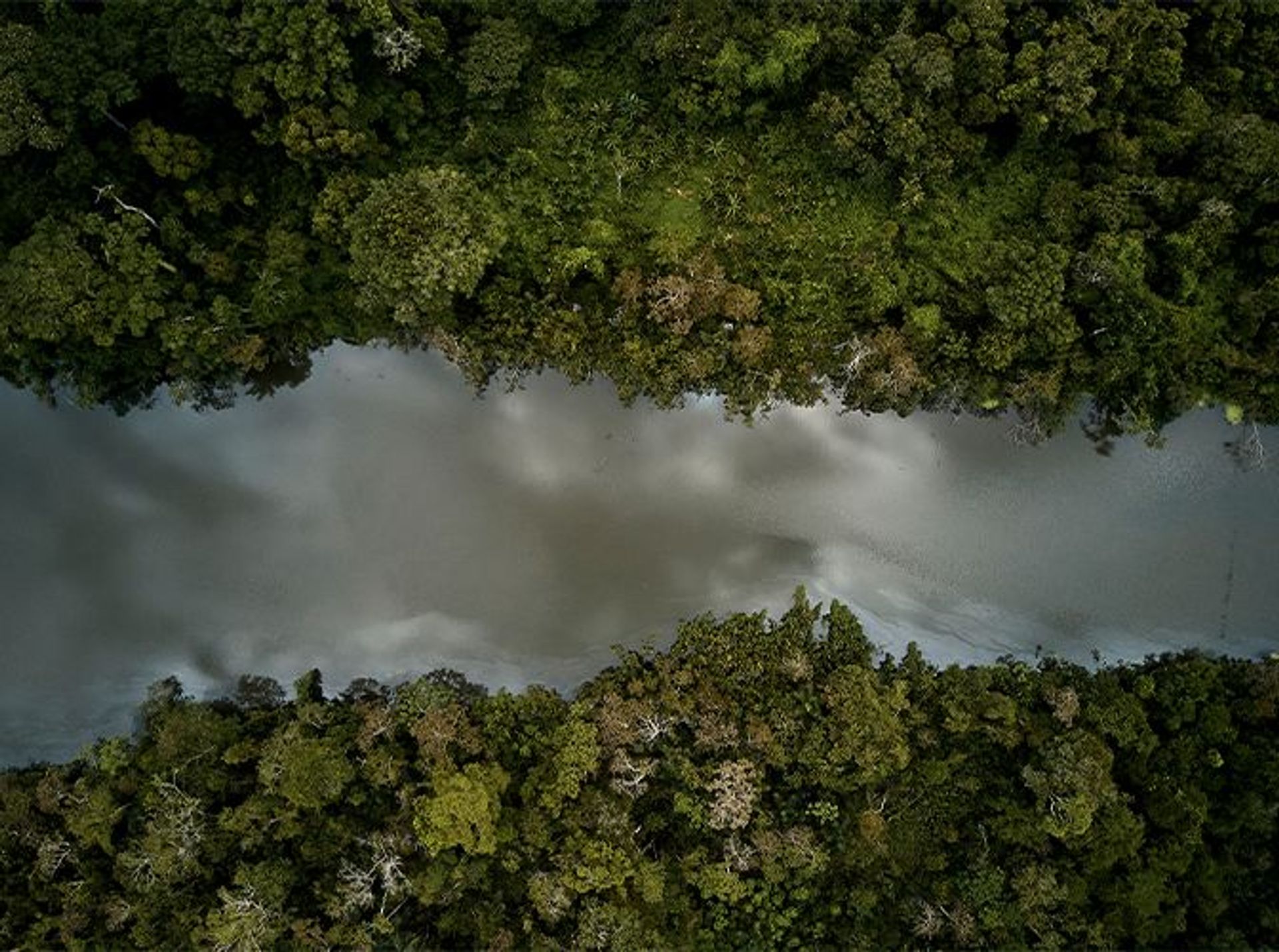
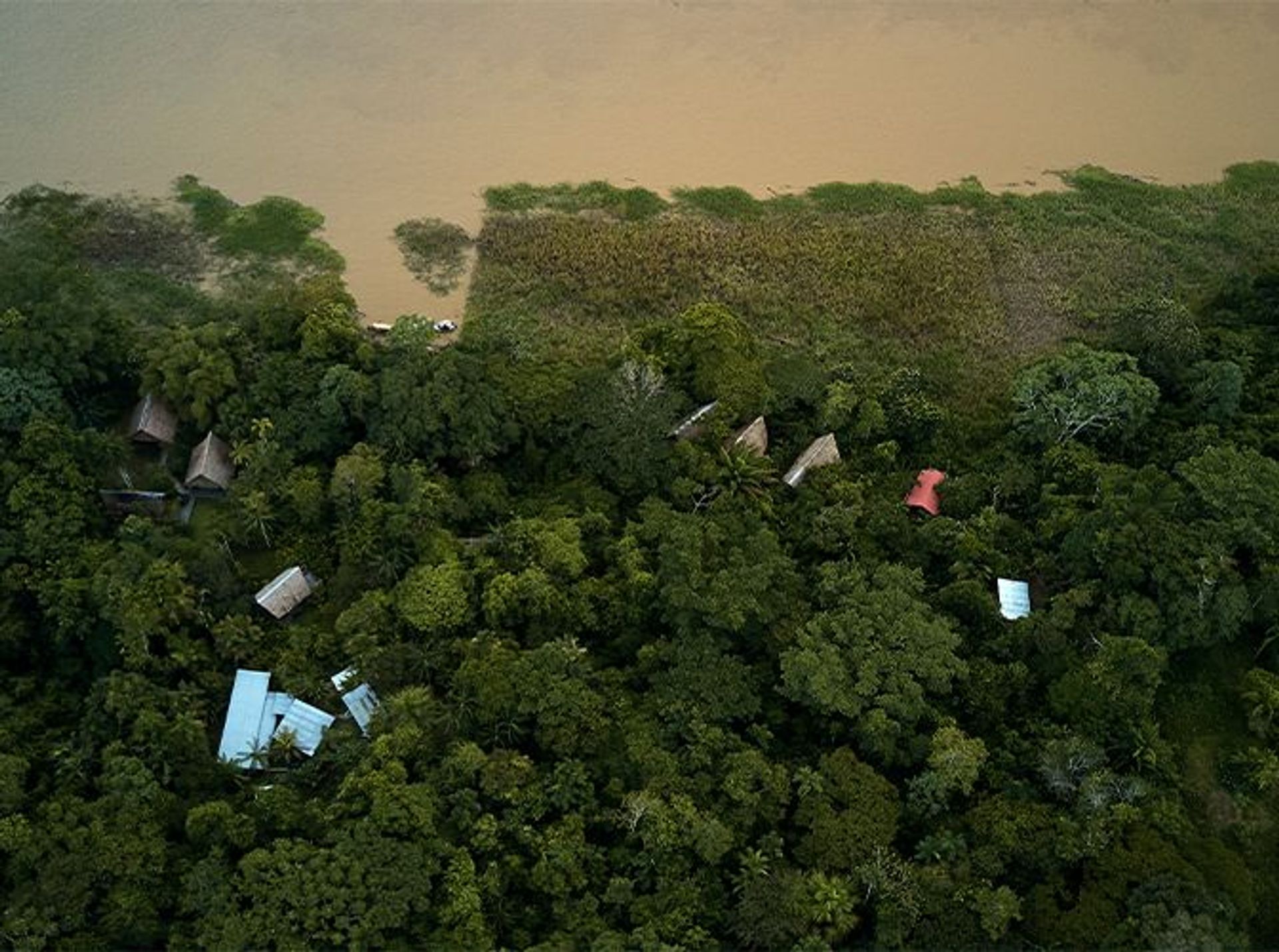
DIEGO, YOU LIVED ALONE IN THE AMAZON FOR SEVERAL YEARS BEFORE MEETING MARLENE. WHAT WAS THAT LIKE?
Diego Samper: "That’s actually what my TED Talk is about: it’s called The Forest Within, and it’s about how I came to live in the Amazon and how the Amazon came to live in me. I built a cabin and I spent two years by myself, without a radio or books. I had a notebook, but I didn't fill it with notes or a chronicle. I filled it with doodles that became abstract shapes. It was an opening of the senses without interference of any kind in my mind.
"I had nothing to do - no companion except a monkey. From time to time I had to go fishing, but it would take me 10 minutes to get a catfish that would last for a week or month. So it was not a matter of survival. It was an experience of contemplation of the forest in the deepest possible way. Everything I have done since then is based on that experience, that perception of God from the living forest.
WHAT KINDS OF WORKS OF YOURS HAVE BEEN DIRECTLY INSPIRED BY THE FOREST?
DS: "I helped create a symphony, made with sounds of the forest. On my last trip there, I did a series of sculptures with woods that had been topped by the wind and partly devoured by termites – it was a collaboration with social insects. They are beautiful objects. Nature proposes – you just take what she is telling you."
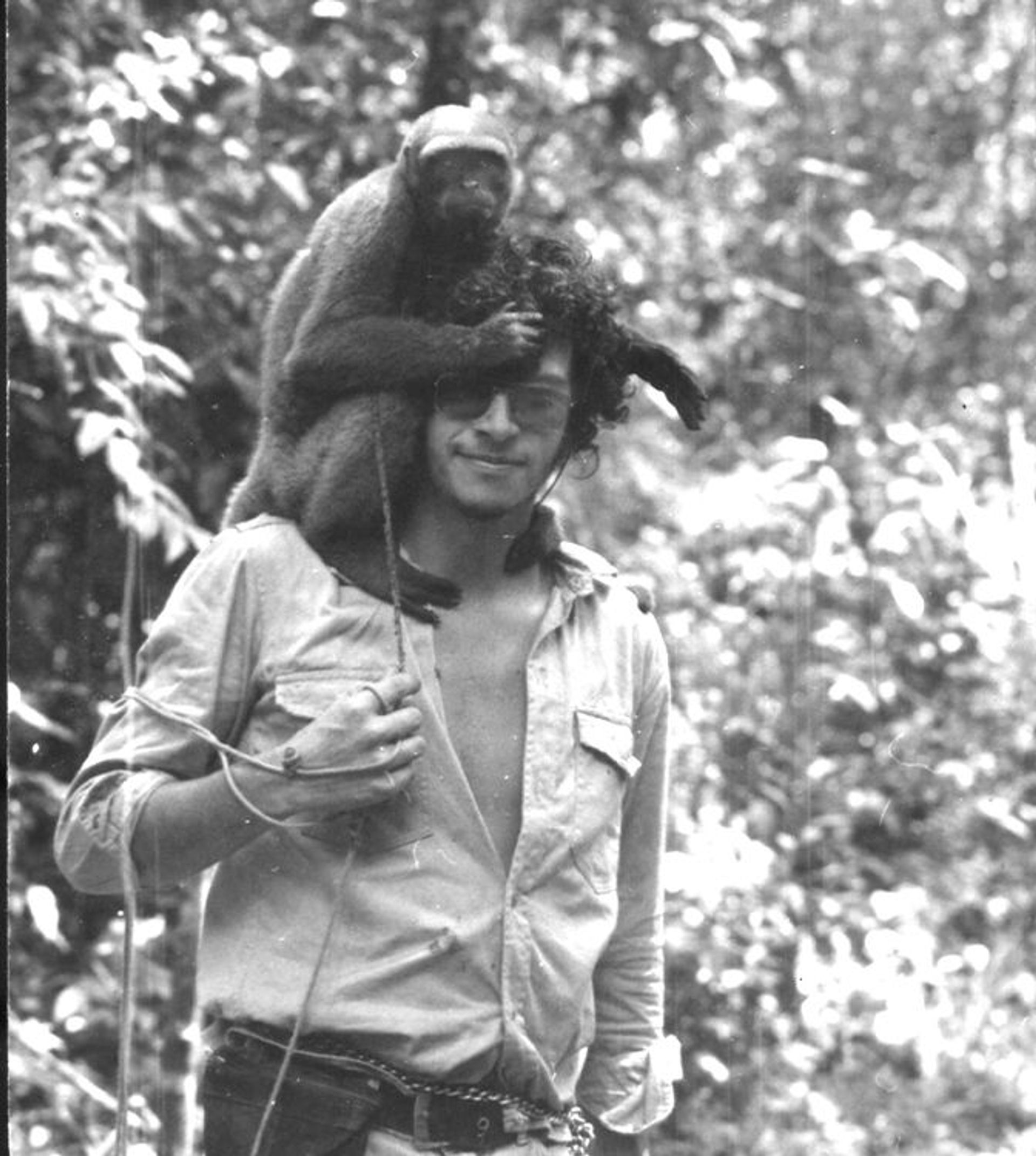
Diego, alone in the Amazon with his monkey companion
Two of Diego's "collaborations" with the insects of the Amazon
MARLENE, WHAT WERE THOSE FIRST YEARS LIKE WITH DIEGO?
Marlene Samper: "We started out in a beautiful house that Diego built. We didn't have any electricity or anything like that. But it was a beautiful time doing many things together. It was hard. The jungle is the boss. And the jungle is the one that decides what to do and where and when to do it. But I understood Diego perfectly well and his goals to bring the Amazon to the people. Our goal was doing conservation projects, Diego expressed the message with art and I did it by learning from the local tribes and contributing to getting solutions for other necessities, like developing economic alternatives in crafts and other resources."
WHAT MADE YOU RETURN, AFTER 22 YEARS OF BEING AWAY?
MS: "Ten years ago, some Canadian friends of ours asked us to guide them to the Amazon, but for me, it was painful. I didn't want to go, but I ended up saying yes. And when we arrived, it was like magic. Again, the jungle was our main place. We came back and started to look for a place to buy. Nothing was for sale: most of the land was part of a national park or a native area. But a year later, a friend called to say that one of the most beautiful places beside the national park was for sale. We went, walked the area for one hour and it was amazing. It was pure forest with some fruit trees.
"We bought it, but didn't have a penny left to build. Then, the money slowly started to arrive magically. We had a very beautiful collection of objects from the Amazon that we were exhibiting in Canada, and the Museum of Anthropology in Vancouver decided to buy 260 pieces of it. And with that money, we were able to return and to start to build."
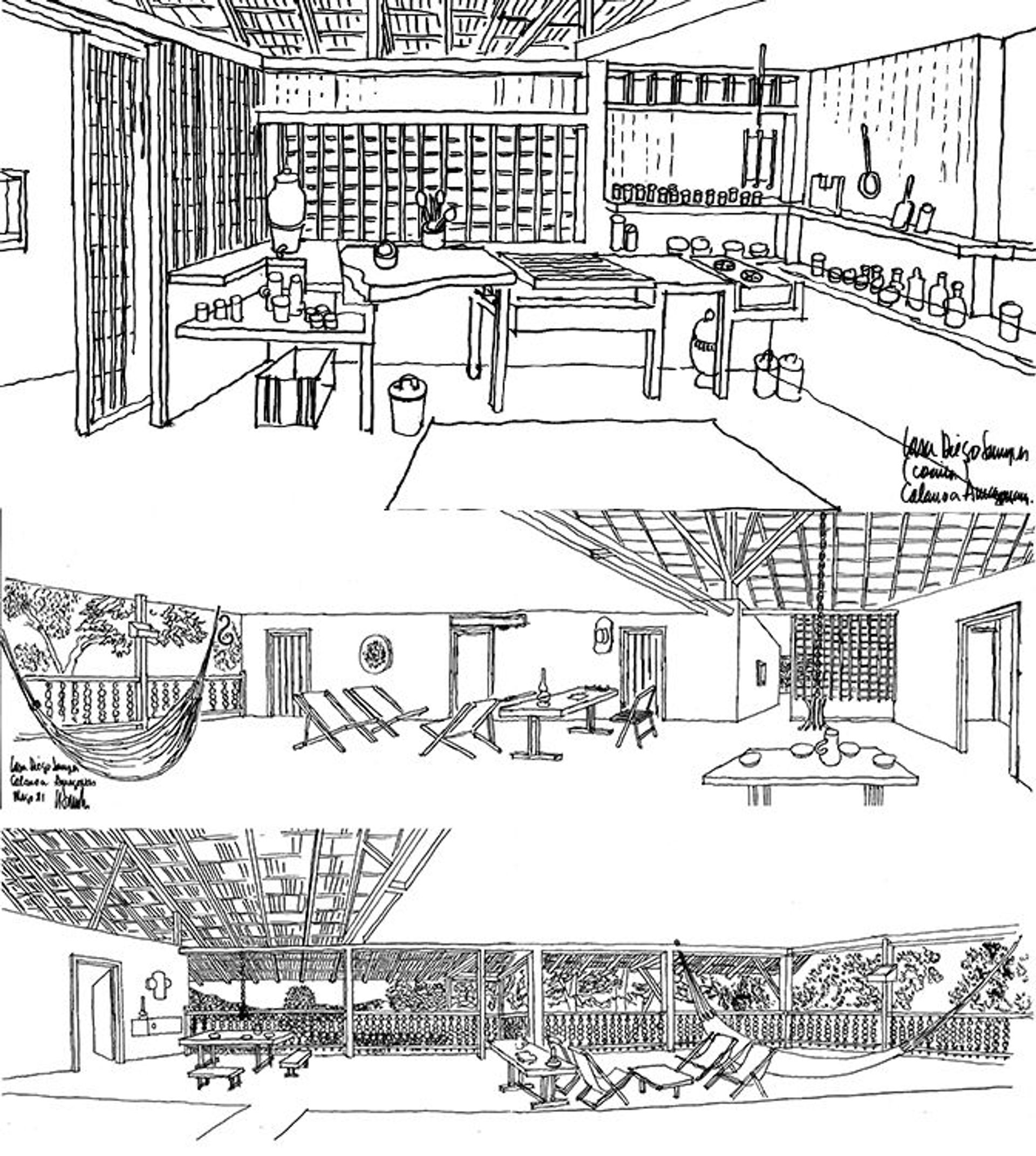
Drawings from 1981 of the first Calanoa, by German Samper, Diego's father
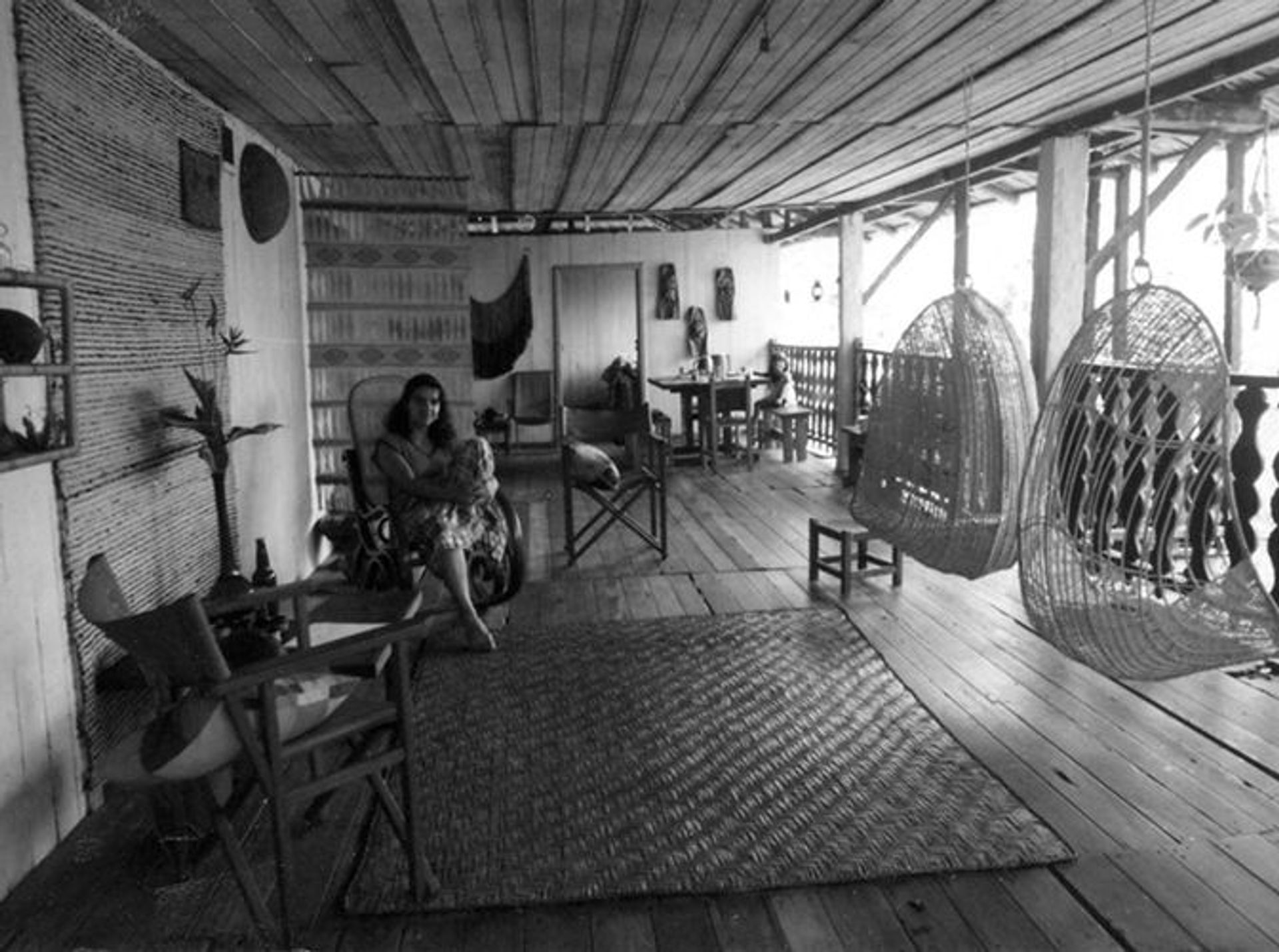
Marlene in Calanoa, in the early days
WHAT INSPIRED THE CABIN DESIGNS?
DS: "First of all, I am an architect de facto. I am a carpenter but I studied architecture all my life through my father, who was an architect, and I published many books on architecture and photographed it. For Calanoa, the idea was not just to make nice buildings. Rather, it was an opportunity to explore the possibilities of building in the humid tropics, with only materials we had at hand.
"We harvested the wood from windfalls. But with all the hundreds of species of woods, only a handful we could use, and only three could be exposed to the elements and insects: Acapú, Aceitunu and Kiniya. So we used those for the structure. For walls, floors and furnishings, we used other woods - some of them don't even have names. The amount of diversity in the Amazon is staggering.
"For the dining pavilion, I made a roof out of an inverted basket weave of palm wood pieces, supported by hardwood costillo columns that once dried, are as hard as iron. We then surrounded the rooms with mosquito net enclosures instead of walls, so they are open. They are basic structures - we lived in them and studied them and eventually, when we had new ideas, we added more."
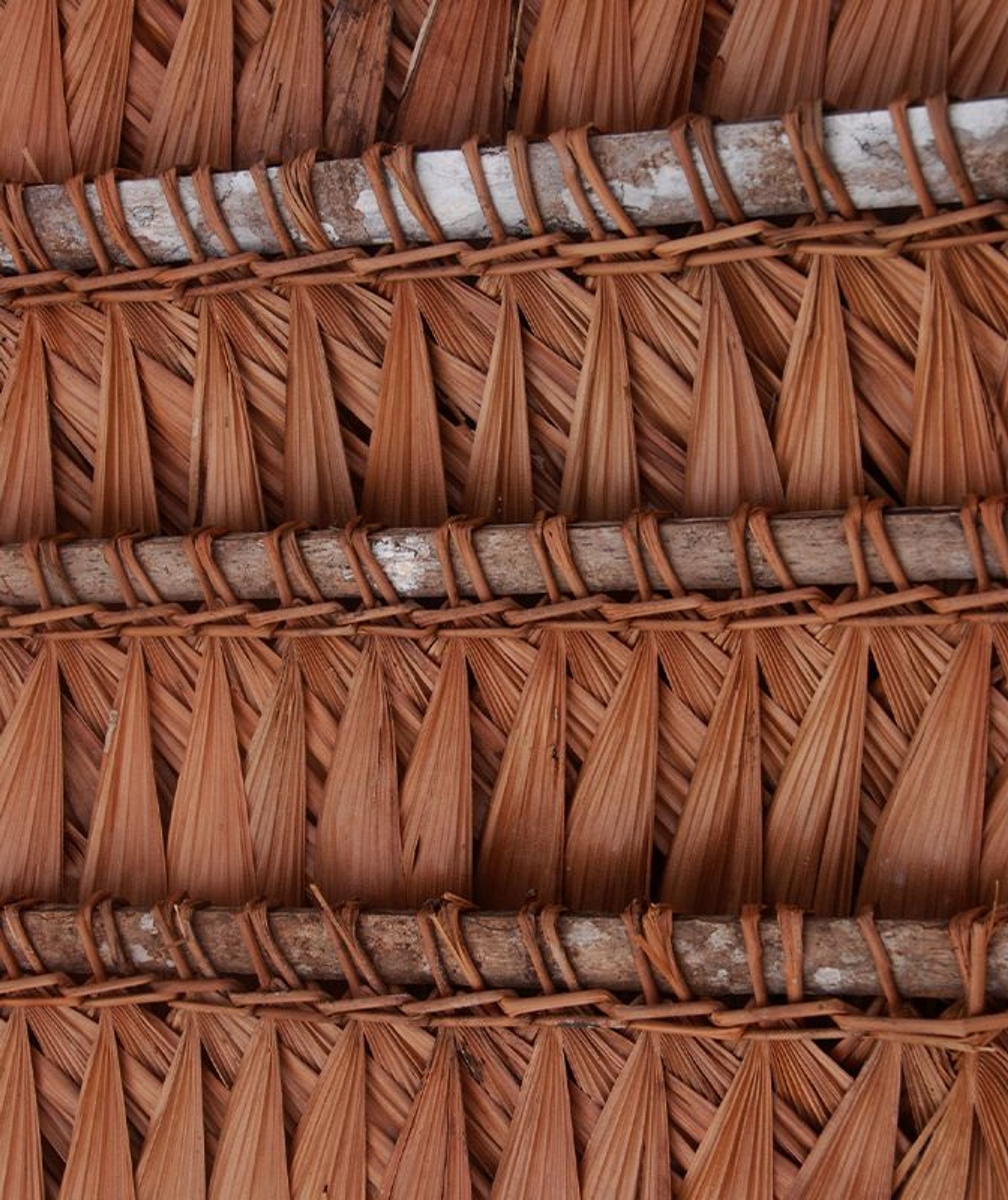
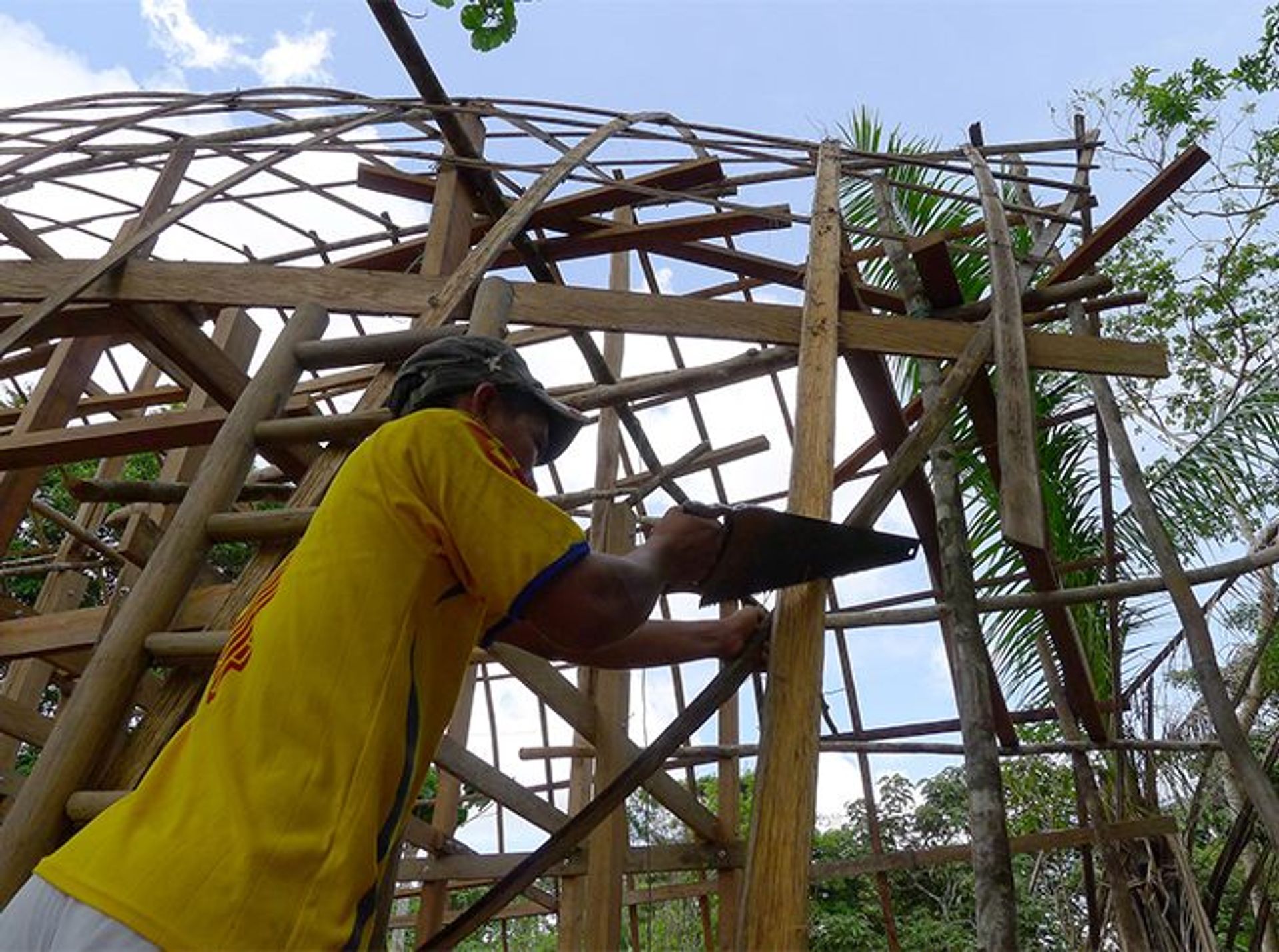

ONE OF THE CABINS IS BOAT-SHAPED AND ANOTHER IS A TREEHOUSE SHAPE. HOW DID YOU COME UP WITH THOSE IDEAS?
DS: "I always had this dream of having a traditional riverboat in the Amazon - but they're quite a nightmare to maintain. So I decided to have one on land - I conceived Araza, one of our cabins, in that shape. It has oval portholes and the structure of the roof is much like the inverted hull of a boat. The Vikings actually used to build their houses that way.
"For the treehouse, I saw a wonderful film called Aguirre by Wernor Herzog. There is an image of a Spanish galliard (ship) in the top of a tree and it fixed in my mind. We did something like it, but instead of building on top of the tree, we built beside a big tree, knowing how fragile they can be with the wind. I found an industrial, translucent fabric that made the whole cabin look Japanese architecture, like sashi screens, because it allows for air and light to pass through. It's strong and not affected by humidity.
MS: "It's an ethereal effect. You see the jungle, but you don't see walls. It feels very fresh."
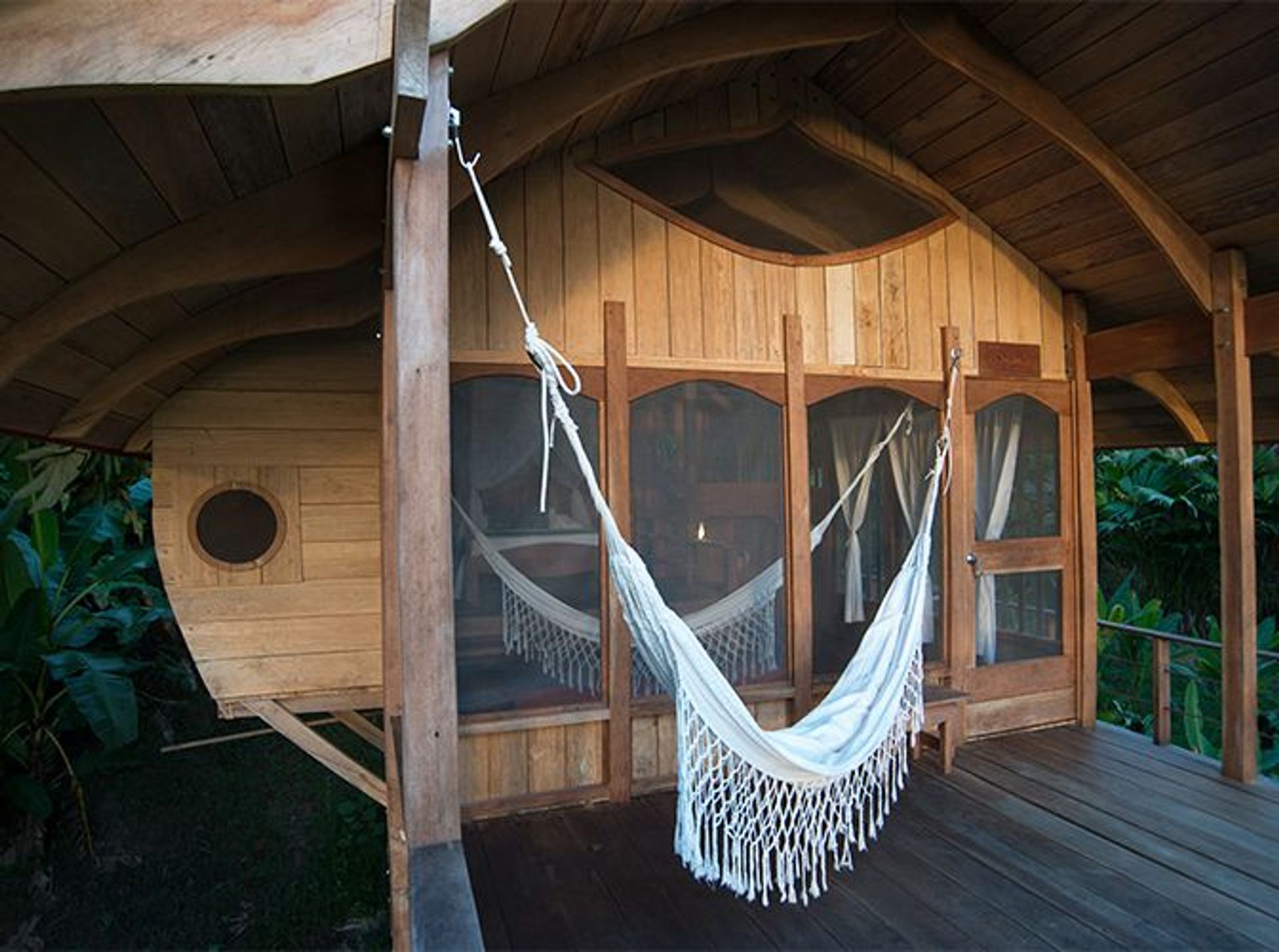
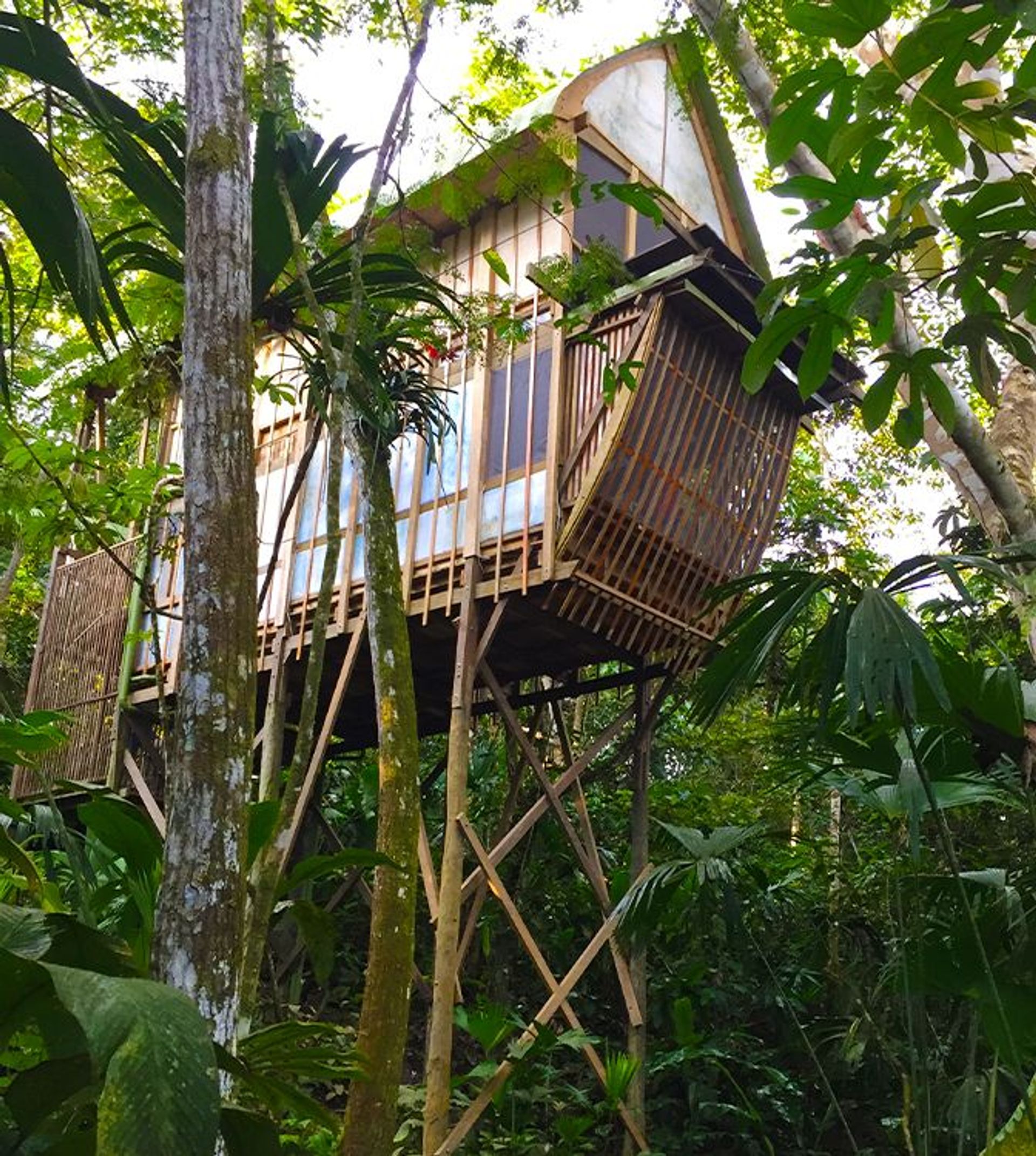
WHAT KINDS OF CRAFTS CAN BE FOUND INSIDE THE CABINS?
MS: "A big thing that you will see in the cabins are "thinkers." The Takuna people and Shamans sit on them and teach people things that make them start to think. They are woodcarved and in the shapes of animals: frogs, turtles, tigers. All of the furniture is made by locals. We decorate with leaves. Everything is from the jungle, including all the food we use."
WHAT KINDS OF AMAZONIAN FLAVORS CAN GUESTS LOOK FORWARD TO TASTING AT CALANOA?
MS: "The main ingredients in the jungle are the best fish on earth, amazing and fresh. With it, we have a few beautiful recipes. We smoke fish. We make patés with avocado, and grilled fish with salsas. We have an ancient sauce called tucupi, made with cassava which is another main ingredient for Amazonian cooking. We work with carrots, beets and cabbage, and plantains, and make a lot of soups. We recovered the recipes from the natives and the flavors are delicious."
IF GUESTS CAN TAKE ONE THING AWAY FROM THE EXPERIENCE, WHAT DO YOU HOPE IT WOULD BE?
MS: "Our job is is to teach everybody that each one has a responsibility. If you recycle, if you live in a park that has a tree, all of these things help the Amazon. Through knowing the people here, their beliefs and goals, we can remember what we need to do together as humans."
To book at stay at Calanoa, click here.
